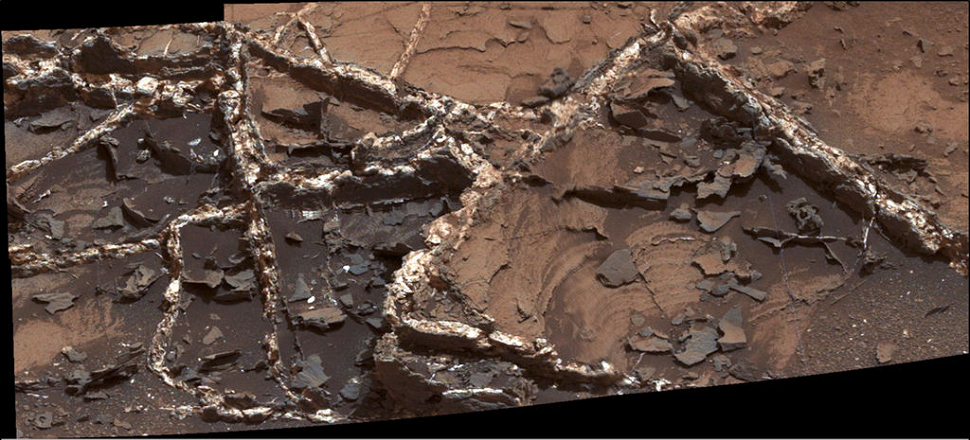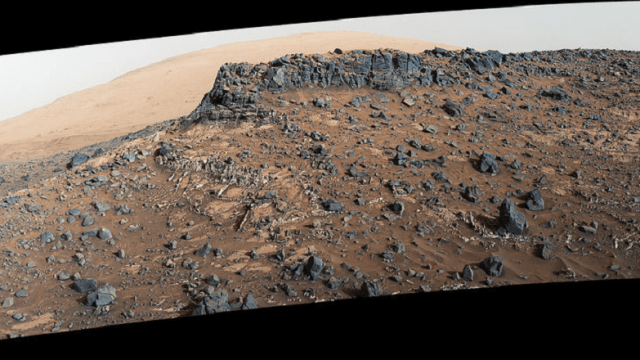The mineral veins that crisscross through the rock around this ridge tell an important story about Mars’ ancient past. So of course the Curiosity rover shot them with a laser.
Scientists have named this scenic spot on the lower slope of Mount Sharp “Garden City.” (Sometimes scientists have a sense of humour.) To give you a sense of scale, the rock outcrop ridge in center frame is about 3 feet tall. A few billion years ago, groundwater flowed through cracks in the bedrock here, carrying minerals it had picked up along the way.
When the water dried up, it left behind the minerals it had carried, creating veins of mineral that filled in the old cracks in the bedrock. The bedrock at Garden City has eroded over time, but the mineral deposits are harder and better able to resist erosion. As a result, the bedrock is slowly pulling away to reveal traces of the water that once flowed here.

A close-up of the Garden City mineral veins, about 2 feet across. Image: NASA
What’s in the Water?
The mineral deposits at Garden City could tell scientists how much water flowed here a few billion years ago and what kinds of chemicals it carried. That could help us better understand what kind of environment ancient Mars might have offered for microbial life, if it ever existed there.
To help scientists understand the chemical makeup of the Garden City veins, Curiosity zapped 17 of them with its on-board laser. It’s part of an instrument called Chemistry & Camera, or ChemCam. When Curiosity fires its laser at a rock, it excites electrons in the rock, which creates a flash of light. By recording the spectral signature of that flash, Curiosity can discover the chemical composition of the rock.
It turns out that water from several different sources flowed through the rock at Garden City at different times. Several of the older veins have newer veins deposited basically on top of them, where water from a new source flowed across the minerals left behind by an older flow. Each vein contained its own unique set of minerals: some are rich in iron, while others contain calcium sulfate, magnesium sulfate, or fluorine.
“These fluids could be from different sources at different times,” said Curiosity science team member Diana Blaney in a press release. “This could be the result of distinct fluids migrating through from a distance, carrying chemical signatures from where they’d been.” Blaney and her colleagues presented their research on Garden City last week at the annual meeting of the American Astronomical Socity’s Division for Planetary Science.
[NASA]
